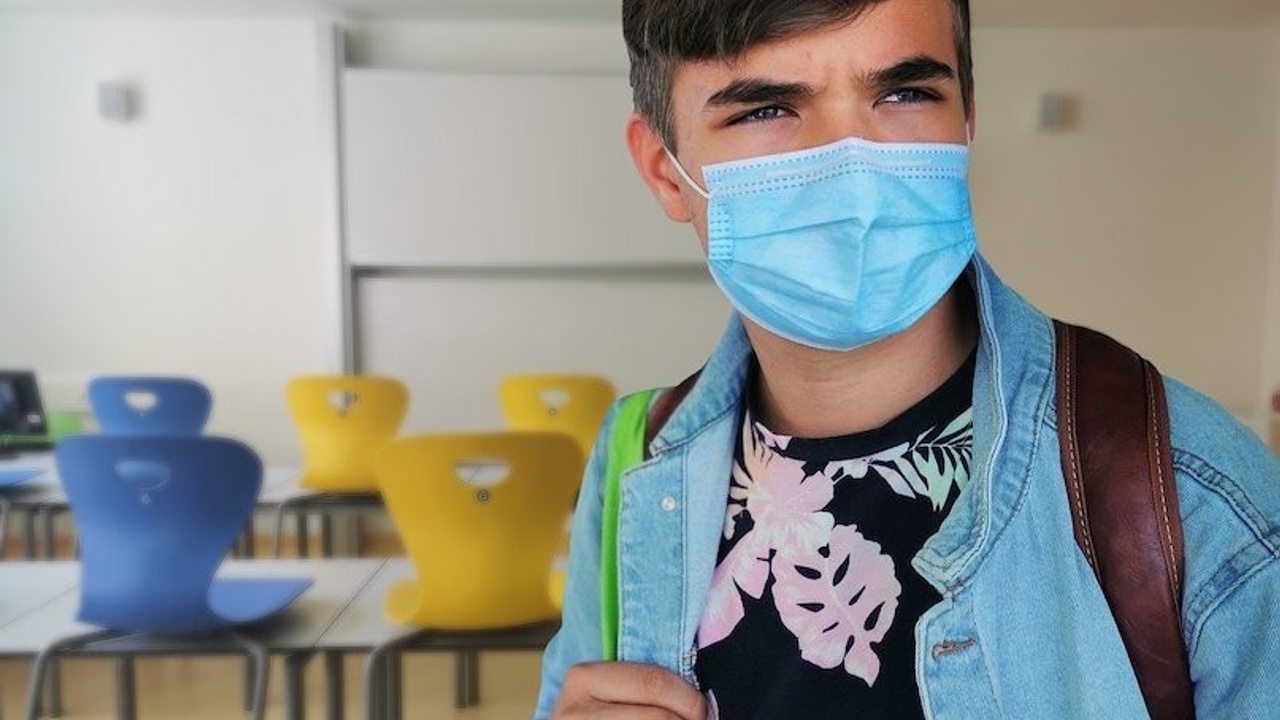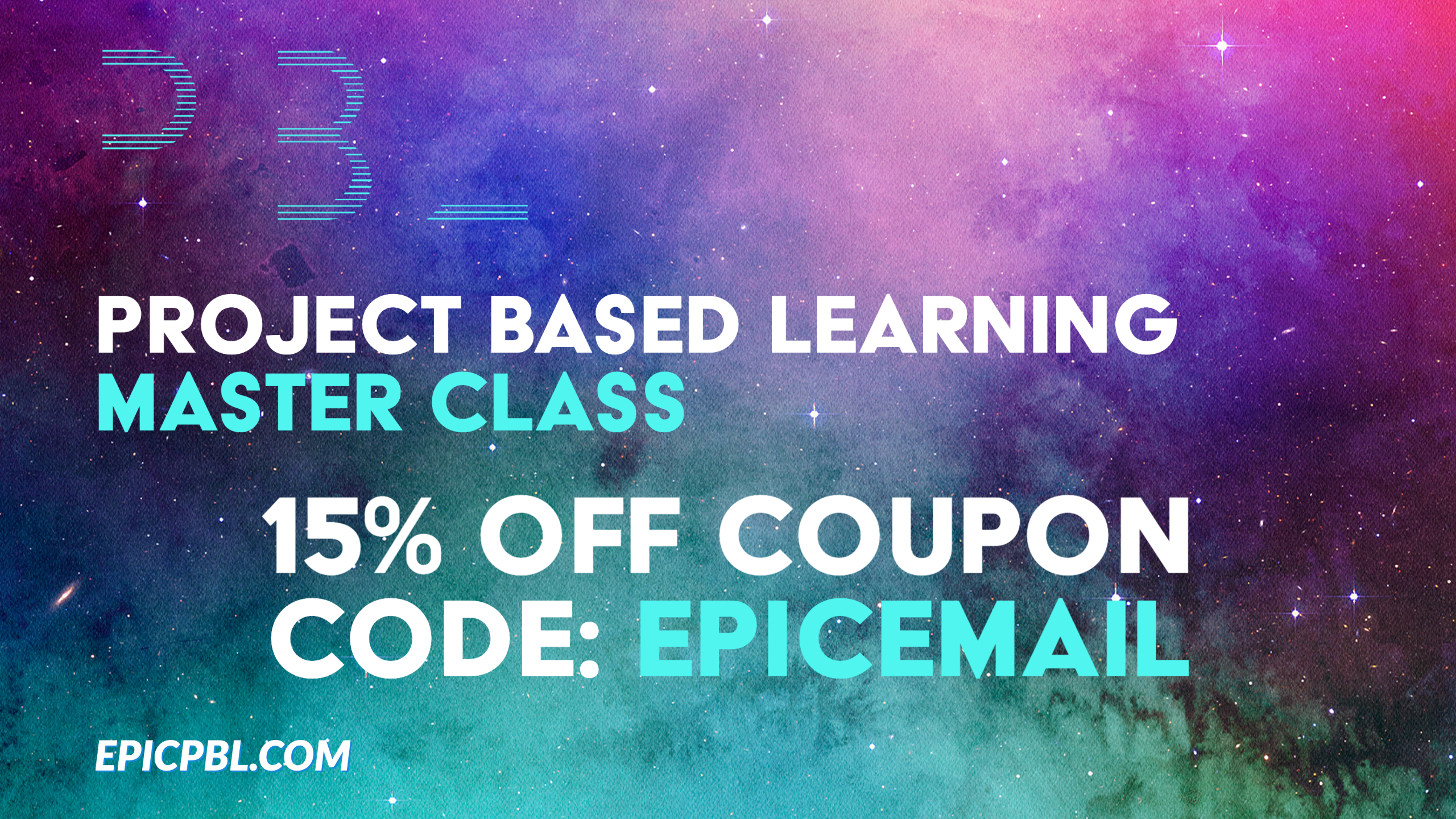
5 Tips For Project Based Learning During COVID
Sep 20, 2021If someone asked me before the pandemic what I think is the best way to get disengaged students to engage in school, I would respond with, “Make learning more authentic. Make school about more than just grades or making their teacher or parent happy. Give students real problems to solve that serve as intrinsic and extrinsic motivators.”
Before COVID, I would respond that they should use elements of Project Based Learning to motivate their students. Now when asked that question, how do we get students to engage despite the disruption and extra challenges caused by distance and socially distanced learning is: “Project Based Learning.”
Yep, no typo there. It’s the same response. Because whether kids are working from their laptops at home or in the classroom behind masks, authenticity and purpose are still the best drivers of engagement. Students want to feel like the work they do in school matters, and that is what Project Based Learning does. Students are given real problems and have to learn certain knowledge and skills to solve them. However, Project Based Learning during pandemic teaching might need to look a little different. Here are 5 ways to make Project Based Learning successful right now.
Give Students Authentic Problems to Solve
Research shows that when students are motivated in school by authentic problems, it has a direct effect on their engagement. This is why having authentic work is so crucial, especially during a time where student engagement might be harder to come by. For instance, if you are going to have a unit on writing short stories, find an audience for your students to write them for. Have them create children’s books that they record themselves reading and send the recordings to a Children’s Hospital. Or connect your students with seniors at a retirement home and have your students write for them. Whoever the audience is, make the purpose for the work more compelling than just to earn a letter in the gradebook.
Coming Up With Authentic Project Ideas
A strategy to come up with an authentic project is to create a list of 10 problems that exist in your school or community. Don’t worry about what unit you are teaching or content standards you need to cover, just write this list. Next, circle the 3 items on this list that feel the most relevant to your students. It's all about finding problems you think your students would be motivated to solve. From there it’s about brainstorming ideas for how your students can have a role in solving that problem. Once you have that, then you can figure out how to tie in content standards. But identifying that authentic problem is the first step.
Emphasize the Project Launch
Real Project Based Learning is also inquiry-based learning. The best type of learning is based off of wonder and curiosity, and this inquiry needs to start at the beginning of a project. So whether you are leading a virtual classroom or one in-person right now, spend intentional time planning how to launch the project. How will you get your students to ask questions? How will you get them excited to solve a certain problem? In Project Based Learning, this is called the entry event. The entry event might be a guest speaker (probably on Zoom right now), a simulation, a letter from a professional, or really anything else that sparks inquiry and introduces a problem.
I know a 3rd grade teacher who took her class to a park across from their school and had them take note of all of the invasive species that are overtaking the park. She explained to her students why this is a serious problem, and from there her students completed a project where they planned an event for the community to come out and pick these invasive species from the ground. She told me the project was a huge success, and this is owed to the relevancy of the problem but also to the fact that she launched the project in an engaging way.
Take Advantage of Technology
If a pandemic occurred in the 1990’s, Project Based Learning would have been a lot more challenging. There are so many different types of technology at your disposal as a teacher in 2021 that can significantly enhance Project Based Learning at this time. For instance, for safety reasons most schools are not allowing visitors. However, with video conferencing, you can use tools like Zoom or Skype to still utilize the impact guest speakers can have on your class. Reach out to professionals and invite them to share their expertise with your students through a video conference.


There are also tools like Trello or Google Docs that can assist with project management and collaboration. Students can work together with more ease remotely because of these tools. Also, using social media, video sites like YouTube, Anchor for podcasts, or Google sites for blogging, students have online platforms to share and publish their work. Technology has the potential to enable incredible Project Based Learning experiences.
Use Formative Assessments Frequently
In a virtual or socially distanced classroom, it can be more difficult for students to express themselves and advocate for help. This is why it’s crucial to use formative assessments frequently to gauge their understanding and figure out how you can assist them. For instance, use peer/self-assessments at multiple points throughout a Project Based Learning project. Ask students to assess how collaboration is going. How would they assess their peers’ collaboration? How would they assess themselves? Use this data to determine ways to guide them in a project.


You can access a template of a peer/self assessment here.
Have Students Collaborate
There is a common misunderstanding that to collaborate means working alongside someone at all times. This isn't collaboration; this is distracting. Instead, collaboration means having a shared goal and combining ideas and resources to accomplish it. This means collaboration can still be successful in a virtual or socially distanced classroom. Designate time each day for students to check in with each other about the project and create a plan for everyone’s work on it. A great online tool for this is Trello or on Google docs using a project management log.
When students collaborate, the learning is so much deeper. Students form deeper understanding of the content as well as develop a skill that is essential in the 21st century. Not to mention, pandemic learning can be isolating. Having collaborative projects is an effective way to keep students connected with one another during this time.
We don’t have to wait to start Project Based Learning
I’ve heard this sentiment since the pandemic began that this might finally be our chance to change school for the better; that when the pandemic is over it can be a place more suited to the modern world that we live in. While I couldn’t agree more, we do have a huge opportunity to innovate right now, I don’t think we have to wait for some time in the future to make learning more collaborative, wonder-based, and authentic. Instead, we just have to be creative about making it a reality for our students right now.
Want to dive deeper into Project Based Learning? Check out my new online course, "The Project Based Learning Master Class."

Stay Connected With Trevor's Work
Join thousands of educators who receive weekly articles, videos, and inspiration from Trevor.
SPAM is the worst. I promise to only send you my best stuff and NEVER to share your email.

